#marketinglesson
Explore tagged Tumblr posts
Text
HDMS024. How to Stand Out Without Burning Out: Branding, Differentiation, and Sustainable Creativity
Sooooo, quick update—I’m still deep in the trenches of this Harvard course, and at this point, my brain is basically held together by coffee and sheer stubbornness. I just wrapped up Module 2, which covered how brands differentiate themselves from competitors. We explored how companies position themselves in a crowded market, what makes a value proposition distinctive, defensible, and durable, and why some brands create entirely new product categories while others compete within existing ones.
This module hit home because, well, comedy is an insanely crowded market where standing out is everything. But if there���s one thing I’ve learned in the last eight years, it’s that trying to be everything to everyone is a great way to be unforgettable to no one. Finding a niche and embracing what makes you unique? That’s the real key to longevity—whether you’re selling shoes or selling punchlines.
In this post, I’m breaking down:
What I learned from this module (with examples from OOFOS, e.l.f., and Cialis—yes, really)
My own journey of differentiation in comedy (aka how I finally stopped letting other people dictate my voice)
How I’m managing my career with AuDHD without burning out (because standing out is pointless if you can’t sustain it)
What comedians can learn from brand positioning (and why your “competition” isn’t who you think it is)
Let’s get into it.
I. What I Learned from This Module: How Brands Differentiate Themselves
This module was all about brand positioning—how companies define what makes them unique and how they communicate that value to customers. We explored three key questions every brand needs to answer:
Is your value claim DISTINCTIVE? (Do you offer something truly unique that competitors don’t?)
Is your value claim DEFENSIBLE? (Can you back it up with proof so competitors can’t just copy it?)
Is your value claim DURABLE? (Will it still be relevant in five or ten years, or is it just a trend?)
To bring this to life, we studied three case studies:
e.l.f. Cosmetics: A beauty brand that broke into a crowded market by offering prestige-quality makeup at drugstore prices, making high-end beauty more accessible. Their competitive edge? Price AND speed. While most brands take years to launch new products, e.l.f. can launch a new product in as little as 13 weeks.
OOFOS Recovery Footwear: A brand that could have competed in the comfort shoe market but instead decided to create an entirely new category: recovery footwear. Their competitive edge? Their proprietary OOfoam technology, which absorbs 37% more impact than other shoes.
Cialis vs. Viagra: Instead of trying to convince millions of men who didn’t use ED drugs to start taking Cialis (which would’ve required changing their entire perception of aging and masculinity), Cialis went after Viagra’s existing users and positioned itself as the longer-lasting alternative. Their competitive edge? Instead of marketing the science behind their product, they sold the relationship benefits—helping couples enjoy spontaneous intimacy instead of having to plan around a four-hour window.
Each of these brands had to decide where to compete:
Compete in a crowded space but offer something better?
Or create an entirely new category and own it before competitors catch on?
That last question hit me HARD. Because in comedy, everyone is competing for laughs, but the ones who stand out either do something completely different or deliver something familiar in a way no one else can.
So that got me thinking… How have I positioned myself in comedy? Am I competing in an overcrowded market, or am I carving out a unique space for myself? Turns out, I’ve spent years struggling with this exact question without realizing it.
Let’s talk about that.
II. Finding My Voice in Comedy
I’ve been doing comedy since 2016, but let’s be real—I sucked for the first three years. Then, I was okay for the next three. It’s only in the last two years that I’ve actually started to feel like myself on stage. And this year? For the first time ever, I feel like I’ve fully come into my own.
But why did I struggle for so long?
Because I spent YEARS letting other people tell me what comedy was. What comedians should and shouldn’t do. And I took everything they said as absolute, unquestionable truth.
And now that I know I’m autistic and ADHD (AuDHD), I realize... OH. That explains so much.
It turns out, one of the ways autistic people struggle is with black-and-white thinking. If someone tells me something is a “rule,” my brain takes it as law. I don’t question it. I assume it’s just the way things work.
So when comedy professors, bookers, or other comics told me things like:
“Your stories aren’t stand-up. That’s storytelling. You have to start from scratch.”
“Real comedians do short punchlines, not five-minute stories.”
“You need to focus on being a ‘Brazilian comedian’ because that’s what people expect from you.”
“If you’re too pretty on stage, people won’t take you seriously.”
…I took it all at face value. I thought these weren’t just opinions—I thought they were rules I had to follow to succeed.
So what did I do?
I scrapped everything that made me unique.
Instead of leaning into my natural, longform storytelling style, I forced myself to do tight one-liners. Instead of telling my insane personal experiences, I stuck to basic jokes about being Brazilian—because that’s what I was told the “general audience” wanted. And instead of embracing my natural stage presence, I dimmed myself down because I thought that’s what it took to “make it.”
And guess what?
I BOMBED. For THREE YEARS. Because none of that felt authentic to me.
I wasn’t bad at comedy—I was just trying to be a version of a comedian that didn’t fit me.
The first time I ever killed on stage was when I ignored everything I was taught and told a seven-minute-long story about a man with a milk bag in his pants on the subway.
And the audience LOST IT.
That night rewired my brain.
I realized: Maybe they were wrong. Maybe I could make storytelling work in stand-up. Maybe I didn’t have to follow a cookie-cutter formula to be funny.
And now, years later, I finally get it.
The reason I struggled so much early on is the same reason brands struggle to stand out. I was trying to fit into an already crowded market of comics doing the same type of jokes. But the minute I leaned into what made me different, I found my audience.
So what does this have to do with branding? EVERYTHING.
Because if a comedian—or a brand—doesn’t stand out, they get lost in the noise. And standing out means having the confidence to double down on what makes you different.
III. Managing Burnout with AuDHD: Finding a Sustainable Creative Process
One of the biggest lessons I’ve learned—both from comedy and from this Harvard course—is that standing out is pointless if you burn out before you get anywhere. And when you have AuDHD (autism + ADHD), burnout isn’t just a possibility—it’s a guarantee if you don’t manage your energy properly.
For the longest time, I didn’t manage it. I treated my creative process like an all-or-nothing sprint. I’d get hyperfixated on a project, spend days in a row working on it with no breaks, and then completely crash, needing weeks (sometimes months) to recover.
Comedy was no different. I’d go all in on writing new material, scheduling as many shows as I could, forcing myself to do open mics even when I was exhausted—only to hit a wall and disappear for months. And then? I’d feel guilty for not “hustling” enough, and the cycle would repeat.
The AuDHD Burnout Cycle: Work Hard, Crash, Repeat
AuDHD makes burnout deceptively hard to spot in the moment. Because when I’m in a hyperfocus state, I feel unstoppable. I love what I’m working on, my brain is firing on all cylinders, and I genuinely don’t notice my energy draining.
Then suddenly, one day, I wake up and everything feels impossible. My brain fog is unbearable. My body feels like it’s been hit by a truck. I lose motivation to do anything—even things I love.
And that’s when I realize: Oh. I burned out again.
The worst part? My brain tells me that if I’m not constantly producing, I’m falling behind. It makes rest feel like failure, even though it’s literally the only thing that allows me to keep going.
How I’m Learning to Work With My Brain (Instead of Against It)
I’m finally breaking out of that cycle, but it took a lot of trial and error. Here’s what’s been working for me:
Pacing Myself with Rigid Flexibility: I have a structured content calendar, but it’s fluid enough to adapt when my energy shifts. If I wake up in a brain fog, I swap deep work for lighter tasks. If I feel hyperproductive, I batch-create as much as I can while I have the energy.
Working in Task-Based Bursts Instead of Marathon Sessions: Instead of forcing myself to work nonstop for hours, I break tasks into small, manageable chunks and spread them throughout the day. This keeps me engaged without overloading my brain.
Honoring the Hyperfixation While Setting Limits: If I feel obsessed with something, I lean into it—but with a hard stop. I let myself deep dive for a set period (e.g., 3-4 hours), then force a transition (walk, eat, shower) before moving on to something else.
Using Variety to Avoid Overwhelm: If I focus on one thing too long, my brain locks up. So I mix up my work—writing, filming, editing, research—so I don’t hit the mental saturation point.
Tracking My Energy Patterns (and Adjusting Accordingly): I’ve started noticing trends in my focus levels—certain times of day, certain environments, certain triggers. Now I schedule work around my natural rhythms instead of forcing myself to be productive when my brain is in low-power mode.
Reminding Myself That Rest is a Strategy, Not a Reward: The hardest part. Resting before I crash. Taking breaks before I need them. Accepting that sustainability matters more than speed.
Why This Matters for Comedy (And Every Other Creative Career)
Comedy isn’t just about being funny. It’s about consistency. If I’m too burned out to write, perform, or promote myself, it doesn’t matter how good I am. I won’t grow. I won’t get booked. I won’t keep up.
So now, instead of pushing myself until I crash, I focus on longevity. Because standing out is great—but only if I have the energy to keep going.
IV. Applying Brand Differentiation to Comedy: Standing Out in a Saturated Industry
At this point, it’s painfully clear that the entertainment industry (especially comedy) is oversaturated. There are so many comedians out there—each one trying to make a name for themselves, compete for stage time, grow an audience, and get noticed.
Which means that standing out is everything.
But what does that actually mean?
Most comedians assume that standing out means being the funniest person in the room. But here’s the thing:
Funny isn’t enough.
There are a lot of funny people who never get anywhere. And there are a lot of comedians who aren’t technically the funniest—but they still manage to build a massive audience and career.
Why? Because they know how to differentiate themselves.
This is exactly what I’ve been learning from this Harvard module: how to position myself in a way that makes me uniquely valuable to my audience. How to be the person that people actively seek out, remember, and return to—because I offer something they can’t find anywhere else.
Finding My Competitive Advantage as a Comedian
The same way companies have to identify what makes their brand different, comedians have to figure out:
What makes me stand out from every other comedian on stage?
What am I offering that no one else is?
What’s my “thing” that keeps people coming back?
For years, I thought the answer was “just be funny.” But that’s not differentiation. That’s bare minimum.
My actual competitive advantage?
I tell long-form, absurd-yet-relatable stories. Most comedians do short punchy jokes or quick observational humor. My sets lean into structured, narrative storytelling—but with an emphasis on big, wild, theatrical payoffs.
I mix horror, romance, and immigrant humor in a way that feels fresh. I’m a Brazilian immigrant with a deep love for horror and fantasy—so my comedy is this weird blend of spooky, romantic, and deeply cultural. It’s niche but hyper-specific, which makes it memorable.
I’m a hot comedian who isn’t afraid to lean into it. As we’ve already established, a lot of comedians are deeply uncomfortable with the idea of being both “pretty” and “funny.” I used to suppress it—but now? I embrace it because it makes me stand out.
Once I figured these things out, everything changed. My material hit harder. I started getting booked for the right shows. I stopped trying to fit into an industry mold that wasn’t built for me, and instead, I built my own lane.
Lessons from Harvard That Comedians Need to Hear
This module was all about differentiation—how to set yourself apart from the competition in a way that makes your audience choose you. And honestly? Comedians need to think about this just as much as brands do.
Here’s what I’m taking from this lesson and applying to my comedy career:
Stop competing on “funny” alone. Everyone is funny. You need to be unique.
Find what makes you different—and lean into it, hard. Your weird, niche, specific thing? That’s the thing people will remember.
Don’t water yourself down to be ��palatable” for everyone. If you try to appeal to everyone, you’ll be memorable to no one.
Your comedy isn’t for everyone, and that’s a good thing. The more you embrace your niche, the stronger your audience will be.
Brand yourself with the same intention as a company does. Think of yourself as a business. What’s your value proposition? Why should people follow you instead of the thousands of other comedians out there?
Owning My Lane Moving Forward
I spent years trying to be the comedian I thought I had to be. Trying to mold myself into what I assumed the industry wanted from me.
Now? I’m building my own brand. I’m owning what makes me different. I’m not trying to be the funniest comedian in general—I’m trying to be the comedian that people who love my style come back to every time.
Because in the end, standing out is the real game-changer.
V. Managing AUDHD Without Burning Out: The Balancing Act of Creativity and Energy
Here’s the thing about being autistic and ADHD (AuDHD) in an industry that thrives on constant output, networking, and high-energy performance: it’s exhausting.
Comedy, content creation, and entrepreneurship all demand a nonstop hustle. You’re expected to always be writing, always performing, always promoting, always engaging. And if you’re not doing that? You feel like you’re falling behind.
For a long time, I thought I just wasn’t built for it. I’d see comedians with endless energy, doing five shows a night, grinding social media, networking like crazy, and never seeming to slow down. Meanwhile, I’d do two back-to-back gigs and need three business days to recover.
It wasn’t until I understood my neurodivergence that I realized:
I’m not lazy—I have a different energy economy. Some people can do multiple shows a night. I can’t. But I can produce and curate unique experiences that other people can’t.
I need to manage my creative output like a limited resource. If I try to go all-in all the time, I’ll burn out. But if I pace myself? I can maintain my creative momentum.
My workflow has to match my brain, not the other way around. Trying to force myself into a neurotypical routine is a recipe for failure. Instead, I’ve built systems that work with how my brain naturally functions.
How I’m Structuring My Comedy Career Without Overloading My Brain
Most comedians follow the traditional grind model—constantly performing, hitting every open mic, and burning themselves out in the name of "putting in the reps."
That does not work for me. So I’ve built my own system.
Batching instead of daily grind.
Instead of forcing myself to constantly write and perform new material every single week, I batch my creativity into intense deep-dive sessions.
I’ll spend a few hyperfixation days writing and refining, then space out my performances so I’m not draining myself every night.
Strategic energy management.
I schedule low-energy tasks (writing, editing, admin) on my downtime days.
High-energy tasks (performing, networking, recording) are spread out so I don’t crash.
If I do a big show, I block out recovery time the next day so I don’t accidentally tank my entire week.
Automating and outsourcing the stuff that drains me.
Scheduling social media posts in batches so I don’t have to manually post every day.
Using email templates for business inquiries so I don’t have to write the same responses repeatedly.
Delegating tasks when I can (eventually hiring an editor, social media assistant, etc.).
Listening to my brain instead of fighting it.
If I’m hyperfocused, I ride the wave and get as much done as possible.
If I’m burnt out, I don’t force productivity. I allow myself to rest, recharge, and come back stronger.
Redefining “Success” Without the Burnout
For years, I measured my progress based on how much I was grinding. If I wasn’t doing as much as everyone else, I felt like I was falling behind.
Now, I measure my success by:
✅ Consistency over intensity. Instead of going hard for a month and burning out, I focus on a sustainable routine that I can maintain long-term. ✅ Impact over quantity. I’d rather put out fewer, high-quality performances and content than drown myself in mediocre, rushed work just to “keep up.” ✅ Personal milestones instead of comparison. My career moves at my pace. If I’m making progress that feels right for me, that’s enough.
The Bottom Line: I’m Building a Career That Works for Me, Not Against Me
I’m done with the unsustainable grind. I’m building my career strategically, with longevity in mind. That means honoring how my brain actually works, instead of constantly pushing against it.
If that means I take longer to get there, so be it. Because I’d rather succeed at my own pace than burn out trying to keep up with someone else’s.
VI. How Comedians Can Stand Out Without Burning Out
We’ve talked about brand positioning in the context of business and marketing, but let’s bring it back to comedy.
Brand positioning is about what makes you different. What makes you stand out in a crowded space? What’s the thing only you can do?
When I first started stand-up, I didn’t think about this at all. I was too busy trying to fit into what other comedians were doing. I took their advice as absolute rules, even when it didn’t feel right for me.
Now, I realize that comedy—like branding—is about differentiation. It’s about finding and owning what makes you unique, instead of chasing someone else’s formula.
The Three Cs of Brand Positioning in Comedy
We learned that strong brand positioning considers:
1️⃣ Consumer Analysis → What does your audience connect with? 2️⃣ Competitive Analysis → What makes you different from other comedians? 3️⃣ Company (Personal) Strengths → What are you uniquely good at?
If you’re a comedian, applying this means figuring out your comedic identity through the same framework.
Let’s break it down:
1. Consumer Analysis: What Does Your Audience Connect With?
Every comedian has an audience. The sooner you figure out who yours is, the better.
What kind of people laugh hardest at your jokes?
What topics do people love hearing you talk about?
What jokes get the biggest reactions (online or onstage)?
I used to think I had to be funny for everyone. Now I know that not everyone is my audience. My best sets happen when I talk about the stuff that matters to me, and the right people resonate with it.
2. Competitive Analysis: What Makes You Different From Other Comedians?
Comedy is like marketing—there are a lot of people doing the same thing. If you’re just blending in, why would anyone remember you?
What’s your angle that makes you different?
What do you bring to the table that nobody else does?
What’s the unique thing only you can do?
For a long time, I was trying to fit into what other comedians thought stand-up should be. I was forcing myself to do shorter, punchier jokes when my brain naturally works in long-form storytelling.
Once I embraced my own style, everything clicked. I’m not a one-liner comic. I’m a storyteller. And that’s what makes me memorable.
3. Personal Strengths: What Are You Naturally Good At?
One of the biggest mistakes comedians make is trying to be something they’re not.
If you’re naturally a physical comedian, lean into it.
If you’re great at crowd work, make it a signature move.
If you thrive in long-form storytelling, don’t force yourself into short-form one-liners.
A huge turning point for me was accepting my strengths instead of fighting them.
I tell insane, lived-experience stories.
I bring a dark, weird, hyperverbal energy.
I love horror, relationships, and immigrant humor.
Instead of molding myself into what I thought comedy should be, I built my comedy around my natural strengths.
The Takeaway: Your Brand as a Comedian is Your Differentiation
If you want to stand out without burning out, you need to know:
✅ Who your audience is. ✅ What makes you different. ✅ What strengths you naturally bring.
Instead of chasing someone else’s formula, build a career that works for you. Your comedic voice is your brand. And when you own it? That’s when you start attracting the right audience and building something sustainable.
VI. What Comedians Can Learn About Brand Positioning
Comedy is an art, but building a comedy career is branding. You might think you’re just being yourself on stage, but audiences—and industry professionals—see you as a brand.
And just like any other brand, comedians need to stand out. The key lesson from this module? You don’t just want to be considered the best—you want to be considered the only one who does what you do.
Take e.l.f. Cosmetics, for example. Instead of competing in the overcrowded beauty market by mimicking luxury brands, they carved out a unique space: prestige quality at drugstore prices. They made sure their value was distinctive, defensible, and durable.
Now, apply that to comedy.
Distinctive: What makes your comedic voice different from every other comedian on the lineup? What do you offer that no one else does? If a booker is scrolling through a list of comics, why should they pick you?
Defensible: Can you prove your value? Do you have a strong POV, consistent comedic style, or audience that already resonates with your material? Can you show that your approach works—whether through social media engagement, killer clips, or audience testimonials?
Durable: Will your brand stand the test of time? Or are you chasing trends that will disappear in a year? If you’re building a career off of crowd work clips but hate doing crowd work, that’s not a durable strategy. If you’ve built a following off of niche references that will date quickly, what’s your next move?
Too many comedians get stuck chasing whatever works in the short term. But if you want longevity in comedy, you need a brand positioning strategy that’s built to last.
VII. How Comedians Can Balance Authenticity and Strategy
At the end of the day, branding isn’t about faking something you’re not—it’s about getting clear on what makes you different and making sure the right people recognize it.
For years, I struggled with this. I tried to fit into molds that didn’t suit me, whether it was shortening my stories to fit “traditional” stand-up structures or dressing down because I was told pretty comedians weren’t taken seriously. But now I realize: the best strategy is to double down on what makes you, YOU.
Brand positioning isn’t about making yourself palatable to everyone. It’s about finding your audience—the people who will ride or die for your comedy because it speaks directly to them. The industry isn’t looking for another generic comedian who plays it safe. They’re looking for voices that stand out, that bring something fresh to the table.
That doesn’t mean ignoring feedback or refusing to adapt. But it does mean knowing when to stand your ground. Not every note is a rule. Not every opinion is fact. And not every industry trend is worth following.
So, whether you’re a comedian, a creative, or just someone trying to build a career without losing yourself in the process, remember this: The goal isn’t just to stand out—it’s to do it in a way that doesn’t burn you out.
You don’t have to change everything about yourself to succeed. You just have to be strategic about amplifying what makes you different.
TL;DR: How to Stand Out Without Burning Out
Aaaaand that was the post!!! You've made it to the end!!!
So, let's recap: branding isn’t about making yourself likable to everyone—it’s about getting the right people to recognize and value what makes you unique. In this post, I broke down:
✅ The Harvard lesson on competitive brand positioning—how brands like OOFOS and e.l.f. differentiate themselves and what makes a value proposition distinctive, defensible, and durable. ✅ My experience with standing out in comedy—why my early career sucked, how I fell into the trap of taking industry “rules” too literally, and what finally helped me find my voice. ✅ How I’m applying these lessons moving forward—doubling down on my strengths, trusting my instincts, and staying true to what makes my comedy unique. ✅ Managing all of this without burnout—balancing self-promotion with self-preservation, navigating creative work with AuDHD, and protecting my energy while building my brand. ✅ What comedians can learn from this—how to craft a unique brand without losing themselves, finding the right audience instead of trying to appeal to everyone, and knowing when to ignore bad advice.
🚀 Key takeaway: The goal isn’t just to stand out—it’s to do it in a way that doesn’t burn you out.
Hope this was as life-changing a lesson for you as it was for me.
See you in the next one!!! Tchau, tchau <3
#PersonalBranding#StandOutFromTheCrowd#CreativeMarketing#BuildYourBrand#BrandStrategy#ComedianLife#ComedyBusiness#FindingYourVoice#AuthenticCreativity#StorytellingInComedy#AuDHD#NeurodivergentCreator#ADHDBurnout#WorkSmarterNotHarder#MentalHealthMatters#HarvardDigitalMarketing#MarketingLessons#LifelongLearning#SelfEmployedLife#CreativeEntrepreneur#MilkshakeLessons#WorkLifeBalance#CreativeBurnout#EntrepreneurMindset#MakingItHappen
0 notes
Text
Shelf Strategy Secrets: Position Your Product Like a Cereal Brand Mastermind
Shelf Strategy Secrets: Position Your Product Like a Cereal Brand Mastermind
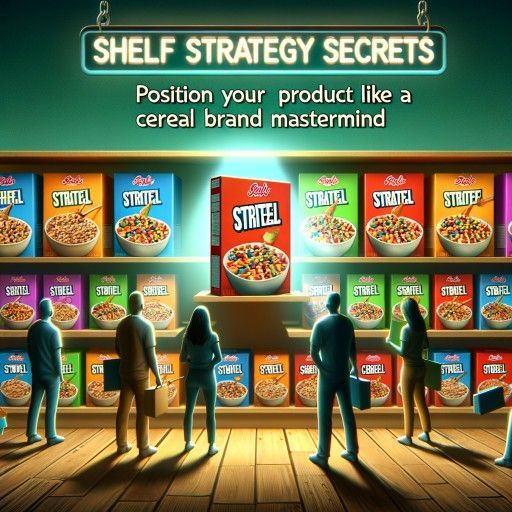
As surprising as it may seem, the cereal aisle holds a profound lesson in marketing—a lesson that could transform how digital creators connect with their audiences in the ever-evolving world of affiliate marketing. Imagine standing amidst the vibrant boxes calling out to shoppers, each with a unique voice and identity. Here, in this sea of breakfast delights, lies an underappreciated secret about branding and positioning that can be applied to any venture trying to capture attention online.
Consider this: Cheerios with its iconic heart image assures health-conscious buyers of dependability and wholesome nutrition. Meanwhile, Cinnamon Toast Crunch with its playful patterns and bright colors beckons to the fun-loving, adventurous spirits looking for a sweet escape. Each brand has meticulously honed its message to speak directly to its intended audience, an artful translation of understanding not just who buys their product, but why.
This nuanced understanding of audience is just as crucial in affiliate marketing. Today’s digital consumers are bombarded with noise—countless brands vying for attention through an overwhelming barrage of emails, ads, and posts. To cut through the clutter, marketers need to do more than shout the loudest. Success hinges on resonating with consumers on a personal level, much like cereal boxes speaking to specific customers.
When crafting marketing communications, such as promotional emails or social media posts, aim to create a message that feels like a personal connection rather than a hard sell. The objective isn’t merely to pitch a product; it's to convey understanding and relevance. Consider incorporating the intricate elements that the cereal aisle masters: identity, strategy, and placement.
Identity: Establishing a clear, distinct brand identity is crucial. Just as cereals employ everything from mascots to mission statements, digital brands must use their tone, visuals, and message to carve a meaningful niche. Understand what makes the brand unique and ensure this shines consistently through every facet of marketing.
Strategy: Positioning plays an instrumental role. Each cereal isn’t randomly placed—it’s deliberate. Healthier cereals are often at eye level for adults, while sugary treats tantalize the young ones from lower shelves. This strategic positioning ensures the product is where its audience is naturally inclined to look. In the digital space, this translates to knowing where your audience spends their time and delivering content accordingly, whether it’s through specific social media platforms, podcasts, or blogs.
Placement: In marketing, placement is equally about timing and platform. Dedicate time to researching when your audience is most active online and what media they consume. There’s considerable power in having your message reach them in the right moments—in their scroll through Instagram or as they skim through their morning emails, just as their minds are open.
Ultimately, mastering the art of offering more than just products, but trusted solutions or joyful experiences, fosters long-term relationships with the audience. In essence, people gravitate towards products and brands that seem to “get them.” This principle is the linchpin of cereal strategies and should be at the forefront of any marketing technique aiming for durable success.
The next time a trip to the supermarket lands you in front of an array of cereals, take a moment to observe the subtleties of their shelf strategies. This colorful lesson can be translated into replicable strategies that effectively place products and people in the path of connection—a deep well of ideas that promises not just immediate attention, but enduring trust from the very people they hope to serve. Embrace this learning, and like the cereals, elevate marketing efforts to new heights.
VISIT MY BLOG: For free resources.
#MarketingStrategy#Branding#AffiliateMarketing#CustomerEngagement#DigitalMarketing#ContentCreation#AudienceConnection#BrandTrust#MarketingLessons#BusinessGrowth
0 notes
Photo
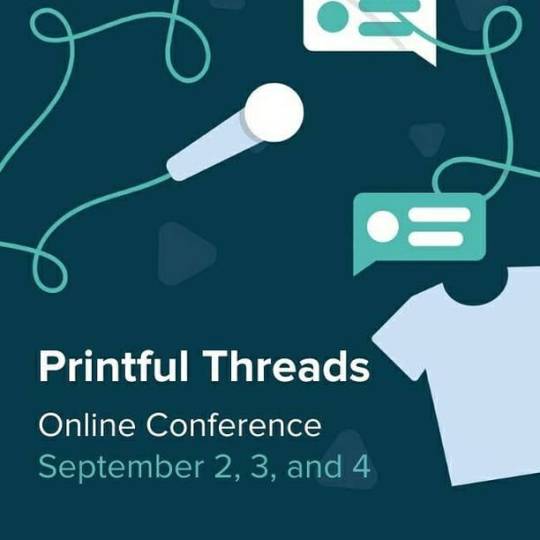
Reposted from @printful The holiday season is approaching! To help you prepare, we’re bringing back our free online conference—#PrintfulThreads. This time, the theme is Marketing Crash Course for Ecommerce Stores and the conference will run from September 2 to September 4. Join us to discover all the aspects of online marketing from A to Z. Here’s what you’ll learn: 📍 How to pick the perfect niche 📍 How to choose the right tactics to drive sales and target your audience 📍 How to plan successful marketing campaigns 📍 And so much more! Sign up for Printful Threads, mark your calendars, and stay tuned ➡️ printful.com/threads . . . #printful #conference #onlineconference #ecommerce #printondemand #onlinebusiness #onlinebusinesstips #onlinemarketing #marketingtips #onlinebusinessmarketing #marketingconference #techandtechie #marketinglesson #sidehustle #smallbusiness #onlinestoreowner #smallbizowner #customprinting #printingindustry #ecommerceindustry #industryleaders #ondemand #business #PrintfulThreads #learnmarketing https://www.instagram.com/p/CEowVtgp2PL/?igshid=2xmyvdm425dh
#printfulthreads#printful#conference#onlineconference#ecommerce#printondemand#onlinebusiness#onlinebusinesstips#onlinemarketing#marketingtips#onlinebusinessmarketing#marketingconference#techandtechie#marketinglesson#sidehustle#smallbusiness#onlinestoreowner#smallbizowner#customprinting#printingindustry#ecommerceindustry#industryleaders#ondemand#business#learnmarketing
0 notes
Photo
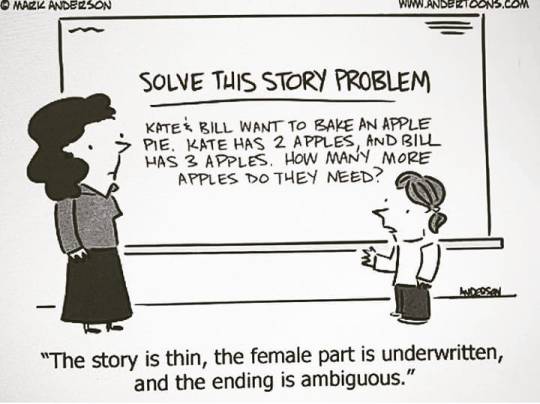
Along my writing journey I believed something that seems logical but isn't very true. I'll bet you've believed it too. "Great art will just be discovered naturally and will promote itself." Since you are on Instagram, it is probable you realize this isnt true. After working so hard to craft your masterpiece, you then realize you have to get it to the world. For many artists this is when the grueling work begins. Many turn to publishers. Writers beg critical people who might deign to accept you if your flavor is what the powers have decided is what's in season. I have been told by publishers, "I adored your book, but there's just "no shelf" for it." Best hidden blessing ever. Learned some skills. Hired a team of marketers and my future success won't lie in the hands of number crunchers who were never concerned with "art" in the first place. If readers adore your writing, you dont need to wait years scourging every adverb, "that," or "then." Its time to get your craft in the hands of more readers. . https://www.amazon.com/Naga-Trilogy-Supernatural-Missionary-Chronicles/dp/1505611709/ . Have you been letting the whims cruel, non-writers prevent you from continuing your writing journey? . . #writerencouragement #writinglesson #marketinglesson #christianbookstagrammer #booksforteens #christianteens #christiantweens #bookadvertisement #bookwriting #yabook #yanovel #christianbook #missionarybook #missionarystories #dragonbook #nagatrilogy #thenagatrilogy #seansanborn #missionarykidchronicles #missionarykids #seansanborn #seansanbornauthor #authorseansanborn https://www.instagram.com/p/CAk0URoAYjL/?igshid=54en1kbcrjyr
#writerencouragement#writinglesson#marketinglesson#christianbookstagrammer#booksforteens#christianteens#christiantweens#bookadvertisement#bookwriting#yabook#yanovel#christianbook#missionarybook#missionarystories#dragonbook#nagatrilogy#thenagatrilogy#seansanborn#missionarykidchronicles#missionarykids#seansanbornauthor#authorseansanborn
0 notes
Photo
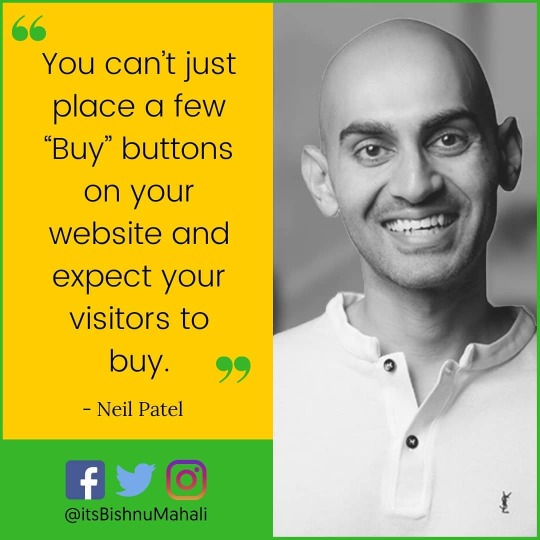
Well, Here's one more from Neil Patel. #marketingdigital #digitalmarketing #onlinemarketing #digitalmarketer #marketinglesson #marketing https://www.instagram.com/p/B4EN2zAAIiq/?igshid=1a96kir9lglt4
0 notes
Link
10x Client Results With These Marketing Lessons from Apple - https://www.pixelproductionsinc.com/10x-client-results/
0 notes
Video
tumblr
10 Marketing lesson to Grow your Business . . .
Follow me @ambiguousit . . . .
#marketingcoach#marketingtime#marketingtips4you#marketingagency#newproducts#productlaunch#marketinglessons#marketingideas#digitalmarketing#digitalmarketingideas#smallbusinesspodcast#smallbusiness#smallbusinesstips#instagramstrategy#instagrambusiness#instagrammarketingstrategy#affiliatemarketingtips#instagramgrowth#ambiguousit#ambiguoussolutions#marketingideas4u#instagramsmallbusiness#startup#marketingdeafiliados
0 notes
Photo
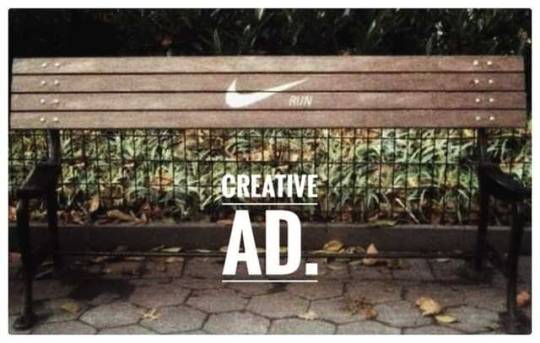
What #Nike speaks rest follows. #Nike has been the pioneer in sports apparel for all segments. The recent Marketing strategy backfired as stated by few; still can't be proved. A sports person believes on himself and his performance. That's what @kaepernick7 stood for and nothing wrong in sharing the DIVIDE. Speak to one who has gone through. 👉 Marketing and Branding should be innovative and associate with real life inspirations. It's always great to have a social message impregnated for longer vibes than short-term whips. ------- #marketing #marketingstrategy #marketinglessons #branding #brandstrategy #positivebranding #negativebranding #nike #sports #sportsperson #innovation #innovativemarketing #justdoit #politics #freedom #freedomofexpression #social #discrimination #communication #channel #digitalmarketing #digitaldivide #troll (at India) https://www.instagram.com/p/Bn5r-IyhwJ-/?utm_source=ig_tumblr_share&igshid=8996ychifntc
#nike#marketing#marketingstrategy#marketinglessons#branding#brandstrategy#positivebranding#negativebranding#sports#sportsperson#innovation#innovativemarketing#justdoit#politics#freedom#freedomofexpression#social#discrimination#communication#channel#digitalmarketing#digitaldivide#troll
4 notes
·
View notes
Photo
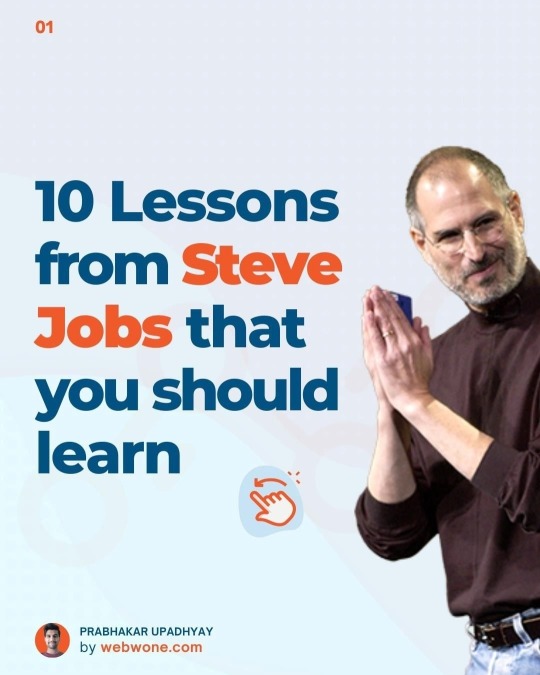
Undoubtedly, Steve Jobs was a great marketer. And his marketing tactics still work very well today. That is why here I am sharing 10 great marketing lessons given by him. I'm sure you will love these lessons. Don't forget to save this post. Follow @prabhakar2064 for digital marketing & growth strategies. . . . . . . #marketinglessons #digitalmarketingservices #marketingstrategies #smallbusinessmarketing #businesssuccess #searchengineoptimization #marketingcoach #marketingconsultant #digitalmarketingtipsandtricks #learndigitalmarketing #digitalmarketingtip #tipsmarketing #marketingtips4you #tipsmarketingdigital #marketingtipsforyou #marketingtips101 #marketingtipsandtricks #instagrammarketingtips #onlinemarketingtips #affiliatemarketingtips #internetmarketingtips (at Delhi, India) https://www.instagram.com/p/CSOzANZrmxE/?utm_medium=tumblr
#marketinglessons#digitalmarketingservices#marketingstrategies#smallbusinessmarketing#businesssuccess#searchengineoptimization#marketingcoach#marketingconsultant#digitalmarketingtipsandtricks#learndigitalmarketing#digitalmarketingtip#tipsmarketing#marketingtips4you#tipsmarketingdigital#marketingtipsforyou#marketingtips101#marketingtipsandtricks#instagrammarketingtips#onlinemarketingtips#affiliatemarketingtips#internetmarketingtips
0 notes
Text
HDMS021. What I Learned About Branding from Harvard Business School
You ever try to market your creative work and feel like you're screaming into the void? Yeah. Me too. Until this week, I thought 'branding' was just about having a cute logo and a catchy Instagram bio. Turns out, I was very, very wrong.
I’m currently taking Harvard Business School’s Digital Marketing Strategy course, not because I have a corporate job, but because I am a self-employed creative trying to figure out how to make my projects financially sustainable. And the thing is, comedy school, film school, and media programs do not teach this stuff. No one sat me down and said, 'Here’s how you actually get people to care about your work—and buy tickets.
So, I’m taking you along for the ride. If you don’t have the time, money, or sheer desperation to take a Harvard course, I’ll break it down for you. In this post, we’re talking about branding—what it actually means, why your creative work needs a clear value proposition, and how I’m applying this knowledge to my own career.
Because here’s the truth: If people don’t understand why your work is valuable, they won’t engage with it. And if you’re a comedian, an artist, a writer—if you’re trying to build something from the ground up—understanding how to position yourself is the difference between struggling to sell tickets and having an audience that actively seeks you out.
So, let’s talk about what branding actually means, why it’s not just about aesthetics, and how Harvard Business School broke it down in a way that made my brain go, "Ohhhh, so THAT’S why I’ve been failing at this."
I. HARVARD RECAP: WHAT I ACTUALLY LEARNED ABOUT BRANDING
Branding isn’t just about a cool logo or matching colors. It’s about how people see you, remember you, and trust you—or don’t. Harvard broke it down into four big questions every brand (including personal brands) needs to answer:
Who are you talking to? (Target audience)
Why should they care? (Unique value)
Who are you up against? (Competitive set)
How do they know you’re legit? (Reason to believe)
And if you can’t answer those? You don’t have a brand.
1. WHO Are You Talking To?
If you try to appeal to everyone, you appeal to no one.
This is where OOFOS, the shoe brand we studied, had to make a choice. Their shoes could help all kinds of people—runners, nurses, older folks with foot pain—but who should they focus on?
At first, they zeroed in on marathon runners. They thought, These are the people who will “get it” the fastest. But as time went on, they realized their biggest customers weren’t the runners—it was people who stood on their feet all day. Teachers. Nurses. Chefs. People who weren’t looking for “recovery shoes” but just needed something that didn’t make them want to cry after a long shift.
So they shifted their focus. Instead of trying to convince hardcore athletes to care, they started speaking to the people who already needed them.
This made me realize something about my own brand: I’ve spent years trying to make my work digestible for everyone, instead of embracing the people who already resonate with it.
I’m not just a comedian. I’m not just a producer. I’m a neurodivergent creative figuring out business, marketing, and self-employment in real-time. The people who will find that valuable aren’t the entire internet. They’re other creatives—especially neurodivergent ones—who never got a business class and are tired of being told they have to fit inside someone else’s system.
Those are the people I should be talking to.
2. WHY Should They Care?
Harvard introduced something called a value proposition. That’s just a fancy way of saying: What makes your thing special? Why should anyone pick you over the million other options out there?
Amazon’s value was clear from the start:
Shop from home instead of going to a store.
More options than any store could carry.
Lower prices because no physical locations.
OOFOS had to figure out their own. At first, they thought their selling point was "recovery shoes for athletes." But when they realized most of their customers weren’t athletes, they had to reframe. They weren’t just making comfy shoes. They were solving foot pain in a way that no other brand could. That became their value.
So what’s mine? What makes my work different from every other comedian, producer, or creator out there?
I used to think I had to be broadly appealing to be successful. Now I realize that’s the fastest way to be forgettable. What makes me stand out isn’t just that I do comedy or deep dives—it’s that I approach it through the lens of love, fear, and foreign places. It’s that I’m showing what it actually looks like to build something from scratch as a neurodivergent creator.
And if I own that instead of watering it down, the right people will care.
3. WHO Are You Competing With?
Whether you like it or not, people are going to compare you to something they already know.
OOFOS had to decide: were they just another comfort shoe like Crocs, or were they something else entirely? If they positioned themselves as just comfy shoes, they’d be up against massive brands like Nike and Adidas. But if they positioned themselves as recovery shoes, they’d stand alone.
This is something I never thought about for my own work.
For years, I’ve been trying to prove myself in the wrong category. I’ve been treating myself like a traditional comedian or a classic YouTuber or a textbook business educator—when in reality, I don’t fit into any of those neatly.
I’m not here to teach comedy. I’m not a marketing guru. I’m not a self-help influencer. I’m a comedian who produces my own shows, studies business in real-time, and shares what I learn while I figure it out.
If I stop trying to compete in categories I don’t belong to, and instead define my own lane, I don’t have to fight for space. The space is already mine.
4. HOW Do They Know You’re Legit?
You can’t just say your brand is great. You have to prove it.
Amazon proved it with millions of customer reviews and fast shipping. OOFOS proved it with real testimonials from people whose foot pain disappeared.
So how do I prove that what I’m doing is worth paying attention to?
For me, proof is:
My work exists. I produce real shows. I release real content.
People resonate. My audience is growing, and they come back for more.
I don’t just talk—I do. A lot of people share advice, but I share the process while I’m doing it.
The internet is full of people making big claims about what they can do. I’d rather let my work speak for itself.
Final Thoughts: Branding Is About Clarity, Not Aesthetics
At the end of the day, branding isn’t about having a cool logo or a perfectly curated color scheme. It’s about making sure people understand you, fast.
If people can’t explain what you do in one sentence, they won’t remember you. And if they don’t remember you, they won’t support you.
So before you worry about making things look good, ask yourself:
Who am I really talking to?
Why should they care?
Who am I actually competing with?
What proof do I have?
If you can answer those clearly, you’re not just a creator—you’re a brand people will actually pay attention to.
II. AUDHD & SELF-EMPLOYMENT: HOW I’M MAKING THIS WORK
One thing Harvard didn’t cover? How to apply all this when your brain doesn’t work like a neurotypical business major’s.
Branding, marketing, and self-employment all assume you can think linearly, set a plan, and execute it smoothly. But that’s not how it works when you have AuDHD (Autism + ADHD).
For me, running a brand means:
Intense hyperfocus followed by burnout. One week, I’m designing the perfect branding. The next, I’m hiding from emails.
Struggling with consistency. Branding loves repetition. My brain? Hates doing the same thing twice.
Being too niche for the algorithm, too broad for a single audience. My special interests don’t fit neatly into one box.
Overexplaining or under-explaining. Either I give way too much detail (like this Harvard recap) or I assume people magically understand what I’m doing.
So, how do I build a strong brand when the traditional way of doing things is literally built for a different kind of brain?
1. WORKING WITH, NOT AGAINST, MY BRAIN
Instead of trying to force myself to be a perfectly optimized entrepreneur, I’m figuring out how to make self-employment work with my AuDHD brain.
What that looks like:
Batching in hyperfocus mode. Instead of forcing myself to be “consistent,” I create in bulk when I’m hyperfocused and schedule things in advance.
Branding around my core themes. Instead of choosing one niche, I structured my brand around three pillars—love, fear, and foreign places—so I have flexibility without losing focus.
Creating self-contained content loops. Instead of trying to build engagement in a way that exhausts me, I make sure every post leads to another, so people can binge my work on their own terms.
Making my brand work like a special interest. If branding feels like a chore, I won’t do it. So I frame it as a puzzle—an ongoing experiment in how to make my work more sustainable.
By adapting branding to my brain, instead of trying to force my brain to work like a marketing textbook, I’m actually able to build something that lasts.
2. THE BIGGEST SHIFT: BRANDING AS A WARD, NOT A NET
For years, I thought branding was about attracting as many people as possible. But what I’ve finally realized? It’s just as much about repelling the wrong people.
Every time I’ve struggled to “build an audience,” it’s been because I was trying to appeal to people I had no business trying to appeal to. I spent years in comedy school and media programs learning how to make myself palatable to the general public—because if people don’t like you, your career tanks, right?
But here’s the truth: not everyone has to like me.
If someone finds my content “too much,” they aren’t my audience.
If someone doesn’t like my neurodivergent traits, they aren’t my audience.
If someone needs my comedy to be perfectly inoffensive and market-tested for the masses, they aren’t my audience.
Branding isn’t just about who you attract—it’s about who you keep out.
The people who find me overwhelming? They wouldn’t like my live shows anyway. The people who think I should be more “polished”? They’d hate my chaotic, deep-dive content style. The people who roll their eyes at the term “neurodivergent”? They wouldn’t resonate with my worldview.
Let them leave.
I don’t need everyone to love what I do. I just need the right people to love it enough to stick around.
SUCCESS AS A NEURODIVERGENT CREATIVE
Branding isn’t just about what looks good—it’s about what makes sense for how you work.
If traditional branding advice doesn’t fit your brain, then make your own rules.
If you can’t be consistent, be unforgettable.
If you can’t fit into a niche, build a world.
If you can’t appeal to everyone, make your brand a ward against the wrong people.
At the end of the day, success isn’t about being the most marketable person in the room. It’s about figuring out how to build something that actually works for you.
And that? That’s something no Harvard course is going to teach you.
III. TL;DR: BRANDING, SELF-EMPLOYMENT & NEURODIVERGENCE
Branding is NOT about being for everyone. It’s about attracting the right people and repelling the wrong ones.
Traditional branding advice assumes a neurotypical brain. If you have AuDHD, you need to build a system that works with, not against, how you function.
Consistency is hard? Be unforgettable instead. Hyperfocus in bursts, batch content, and let your brand evolve like a special interest.
Niche feels limiting? Build a world instead. My brand isn’t about one thing—it’s about love, fear, and foreign places. That gives me structure and flexibility.
Audience building isn’t about casting a wide net. It’s about creating a ward—a signal that attracts the right people while keeping the wrong ones out.
If someone doesn’t like my neurodivergent traits, they were never my audience. Let them go. The internet is big enough for both of us.
Success isn’t about being the most marketable—it’s about building something sustainable. If the rules don’t fit your brain, make your own.
Branding is a game. And I’m finally playing it on my own terms.
Follow me for more reflections! Tchau, tchau!!
#MarketingForCreatives#BrandingForNeurodivergents#AuDHD#SelfEmployedLife#ComedyBusiness#NeurodivergentEntrepreneur#CreativeEntrepreneur#StandUpComedy#MarketingLessons#BusinessForCreatives#ADHDBusiness#AutisticEntrepreneur#ComedianLife#MakingItWork
0 notes
Photo
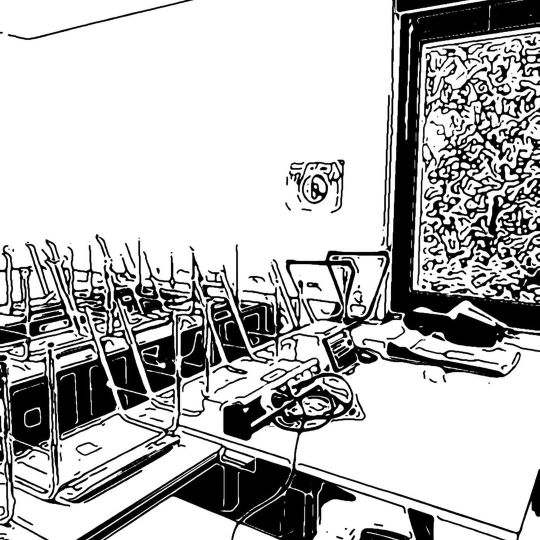
Enjoy your week! Our most beautiful classroom. #ihatevirtuallearning #thd #onlinelessons #deggendorf #bavaria #classroom #marketinglessons #marketing (hier: THD - Technische Hochschule Deggendorf) https://www.instagram.com/p/CCS_-vvhj2V/?igshid=1mspobvq9m680
0 notes
Text
Mobile Apps Revolution
Jump Straight Into The Fastest Growing Mobile App Marketing Tools with these Turbocharged tips and strategies and make a Killing! So, Here’s exactly what you will get with the “Mobile Apps Revolution”
Premier Training guide on Mobile Apps Revolution: A resource for Marketers!
This guide contains excellent strategies to master all aspects of doing the right mobile app marketing for your brand based on extensive research and advice from the best marketers in the industry to enable you to enhance engagement levels of customers and drive traffic. Written by professionals with over 17,000 words, here’s what we are going to provide in this 80+ pages premier training guide.
Well designed Sales Page copy
This professional sales page copy can get huge sales rolling in as part of your front end sales drive.
Professionally designed Graphics
We will provide you with complete set of professionally designed graphics for selling the product. It will include necessary artwork to sell the product and make it more convincing; you’ll be able to edit these graphics at your own convenience. Hence, we will provide the images in both PSD format and PNG format.
Animated Banners
Why create banners yourself when our team is working hard to make it easy for you. Yes, we are also providing you with superbly designed animated banners that will drive traffic and convert sales instantly.
Professionally created expert Email Templates
In this module, we are providing you with professionally written email swipes that will substantially leverage your sales and profits. You can always choose any one of them, pick a subject line and send it to persuade further.
Professional Minisites
What more can you ask for...and we have already done that for you. Yes, we have professionally designed the Sales Pages for you to just use them for your sales funnel. You do not have to invest your time and energy in hiring professionals or writing on your own. These templates are ready to use to improvise your sales.
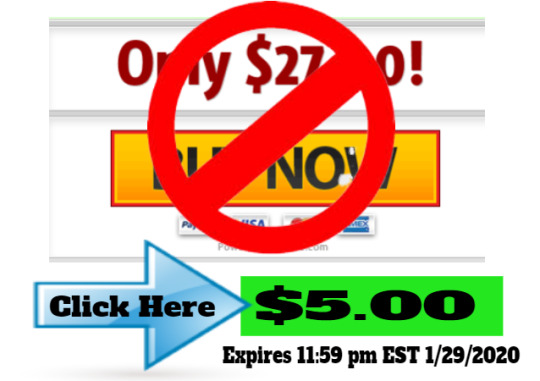
Read the full article
#AndroidApps#AndroidMarketingApps#apps#buildyourownapps#internetmarketing#IPadapps#IPadMarketingApps#IPhoneapps#IPhoneMarketingApps#marketingapps2020#marketinglessons#marketingsecrets#marketingstrategies#marketingsuccess#mobileapps2020#mobilemarketing#mobilemarketingapps#mobilemarketingapps2020#onlinemarketing
0 notes
Photo
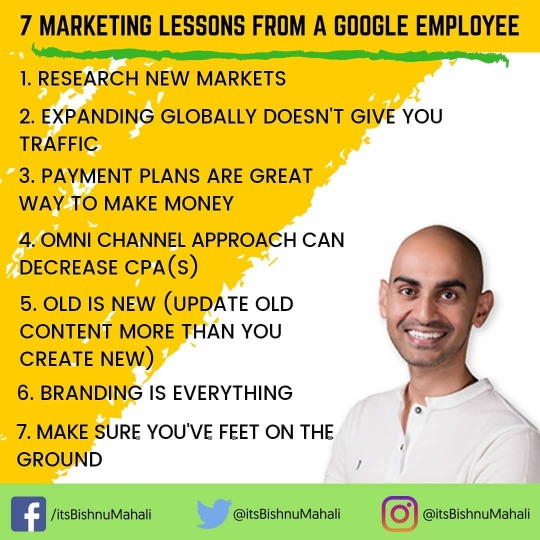
📍 7 Marketing Lessons Learnt From A Google Employee - Neil Patel 1️⃣ The first lesson I learned was to research new markets. 2️⃣ The second lesson I learned is expanding globally doesn't guarantee traffic. 3️⃣ The third lesson that I learned, payment plans are a great way to make money. 4️⃣ The fourth lesson that I learned is by being omnichannel, your CPAs go down. 5️⃣ The fifth lesson I learned from a Google employee, old is new. 6️⃣ The sixth tip, branding is everything. 7️⃣ The last tip, and this one I experienced firsthand to make sure you have feet on the ground. Source: Neil Patel's YouTube Channel -------------------------------------------------- Follow me on Facebook, Twitter & Instagram @itsBishnuMahali for more such content! -------------------------------------------------- #marketingtips #marketingdigital #digitalmarketing #onlinemarketing #marketingstrategies #marketinglesson #marketingstrategy #marketingideas #businesstips #businesslife #business https://www.instagram.com/p/B4CxQ_Dg1Jl/?igshid=1plk69x6kr7va
#marketingtips#marketingdigital#digitalmarketing#onlinemarketing#marketingstrategies#marketinglesson#marketingstrategy#marketingideas#businesstips#businesslife#business
0 notes
Photo
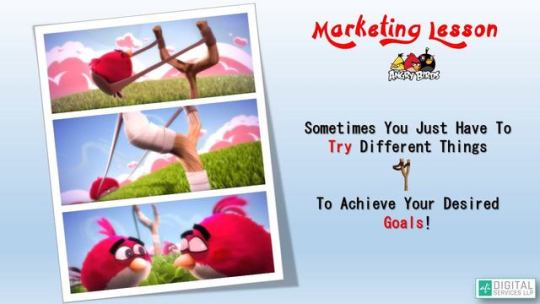
Angry Birds Movie 2 "Keep Trying Until You Succeed" This is what we learn from Angry Birds Movie. Every time we need to try different strategies to achieve the desired result.. . . . . #angrybirds2 #angrybird #realeasing #august2019 #marketingtip #marketinglesson #marketing #digitalmarketing #socialmediatips #afionline #movietime #movie #cartoon #animation #result #growth #seoservicesinindia #seoservicesindelhi #topseoservicesinindia #seoagencyinnoida #seoservices #digitalmarketing
0 notes
Photo
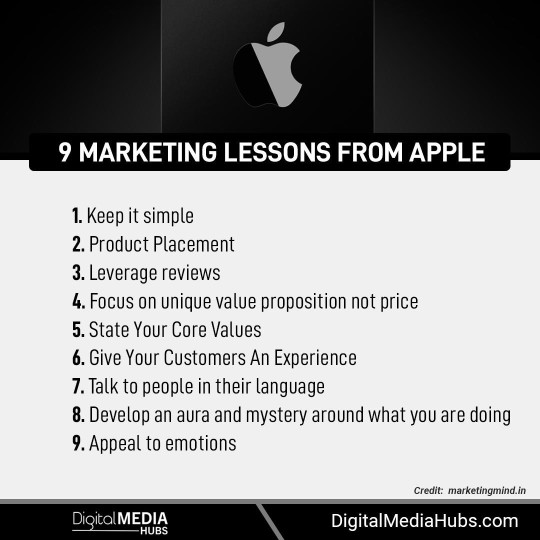
Here are some Marketing lessons to learn from Tech Giant- Apple. #Apple #MarketingLessons #Marketing #DigitalMediaHubs — view on Instagram https://ift.tt/3fjOxpO
0 notes
Photo

Ryan Deiss – Conversion Funnel Mastery This Is The Most Worthwhile Buyer-Getting Marketing campaign We’ve Ever Created… (And Now I Need To Present You How To Construct One For Your Firm) Does what you are promoting have a funnel? Higher query: Do you even know what a “conversion funnel” is? In case you don’t, right here’s a fast definition… A funnel is a multi-step, multi-modality marketing campaign that seamlessly and subtly leads a prospect in direction of a desired motion. In different phrases, a well-optimized “funnel” lets you promote…with out promoting. They're the key to selling your services or products with out being pushy or creepy. Extra importantly… Conversion Funnels Permit You To Absolutely Automate the Total Buyer Acquisition Course of… The actual fact is, most companies have some form of “funnel” for producing leads and changing these leads into paying clients, however only a few have a very OPTIMIZED funnel. That’s the place you are available. As a Licensed Buyer Worth Optimization Specialist, you’ll know find out how to architect a “conversion funnel” that offers companies precisely what they need: MORE clients, which can be…MORE worthwhile, but…LESS EXPENSIVE to accumulate Learn that once more as a result of it’s necessary. (It’s additionally the important thing to unstoppable enterprise development.) In order for you your organization to develop, then you definately want a confirmed, repeatable system that on-boards new leads after which converts these leads into clients…ideally at a revenue. As a result of if you are able to do that…in case you can create a confirmed, repeatable system that maximizes fast buyer worth whereas concurrently decreasing acquisition prices…you'll have cracked the code to enterprise development. Your organization will likely be unstoppable, and you'll possess the only Most worthy ability any marketer can ever possess: The power to create clients out of skinny air. And that’s precisely what you’re going to have the ability to do after you full this class… Along with studying our step-by-step plan for rolling out new conversion funnels (for nearly any sort of enterprise) from scratch, you’ll additionally study: How one can optimize your whole current advertising funnels by making use of the “5 Issues” methodologyThe L x c x m x f = GP system that constantly doubles revenues…One change you can also make to your funnel to immediately get extra leads, subscribers, and in the end clients. (Trace: It has NOTHING to do along with your advert, your headline, your touchdown web page, or your copy.)The straightforward tweak we made for a producing shopper that introduced in a 2,000% enhance in leads!How one can craft a “Assertion of Worth” that completely positions any services or products, and offers your supreme clients EXACTLY what they need (even after they don’t even know they need it…)The 5 “Specifics” that make up a successful Lead Magnet…The appropriate manner to make use of coupons and reductions in funnels that works for each on-line and offline companies…How one can choose the best “Tripwire” for any enterprise. (Contains 7 examples you'll be able to mannequin.)The 2 varieties of doubt nearly each buyer experiences, and find out how to enhance conversions by inoculating towards them forward of time.How one can use “bundling” to de-commoditize a commodity services or products…How we resolved a shopper’s #1 buyer grievance whereas concurrently DOUBLING their revenue margin. (This works in actually any enterprise…even when your clients aren’t complaining.)The three little phrases that may be added to the again of any conversion funnel that’s been accountable for bumping common revenue per buyer by 200%.How one can deploy an automatic, 5-phase followup system that converts extra leads into patrons, and extra patrons into multi-buyers……and far, way more. Briefly, Buyer Worth Optimization Specialists (a.ok.a. “Funnel Consultants”) are capable of not solely ship contemporary leads and clients…they're able to ship these leads and clients at a PROFIT. If you happen to’re excited about changing into such a “Funnel Grasp,” then I've one query for you… Are You A “Doer”…or Only a “Talker?” (or…Why You Would possibly Need To Get Licensed) Let’s face it: Advertising specialists are a dime a dozen. So how do you separate those that “stroll the discuss” from those who merely… …discuss? That’s the issue! And at DigitalMarketer, it was our drawback, too. You see, we don’t simply train advertising greatest practices, we really DO MARKETING for companies that we ACTUALLY OWN. We aren’t researchers. We aren’t journalists. We’re enterprise house owners operating corporations (each on-line and offline) in B2B and B2C markets promoting the whole lot from cosmetics to tenting gear to industrial water filters and the whole lot in-between. In different phrases: WE ACTUALLY DO THIS STUFF… …so we all know how onerous it's to seek out actually expert individuals who know what they’re speaking about. And that’s why we created the “Conversion Funnel Mastery” course and certification. We constructed this certification to coach our personal staff members, however within the spirit of “open sourcing” our enterprise (which is what DigitalMarketer is all about) we’re now making this certification and coaching accessible to the world. Briefly, we’re making it accessible to YOU… What You’ll Be taught In This Course The System for Progress Be taught the Buyer Worth Optimization course of and the system any enterprise can use for exponential development. If you mix the worth of leads, clients, margin and frequency of purchases, you'll uncover your development potential. 5 Phases of Buyer Worth Optimization Construction your advertising technique to seamlessly and subtly information your prospects towards a fantastic services or products. It is possible for you to to accumulate and monetize your clients by taking them from a Lead magnet to a Tripwire Provide to your Core Provide to a Revenue Maximizer and at last a Return Path that may preserve them coming again for extra. “Assertion of Worth” Uncover the easiest way to find out the worth you convey to the market. Then, in a single sentence, you'll be able to completely place any services or products, and provides your supreme clients EXACTLY what they need (even when they don’t even know they need it). Lead Magnet Optimization Generate extra leads utilizing the 5 “particular” ways that may make your supply simpler and compelling to your viewers. Utilizing one or all 5 particular features can maximize the variety of leads and, in the end, conversions. Buyer Worth OptimizationMastery Course Particulars On this 7-hour course, you’ll grasp all of the phases of the shopper worth journey to get essentially the most worth out of your new and returning clients. Module 1:Begin Right here Lesson 1: Right here’s What To ExpectLesson 3: What's CVO?Lesson 4: The System For Progress Module 2:Decide Product/Market Match Lesson 1: The Objective of MarketingLesson 2: Earlier than & After Grid – Toddler TubLesson 3: Earlier than & After Grid – LandscaperLesson 4: Crafting a Assertion of ValueLesson 5: SOV vs. USPLesson 6: Why Worth Isn’t EnoughLesson 7: Two Kinds of Doubts Module 3:Optimize The Lead Magnet Lesson 1: What's a Lead Magnet?Lesson 2: Significance of SpecificityLesson 3: Make A Particular PromiseLesson 4: Give A Particular ExampleLesson 5: Provide A Particular ShortcutLesson 6: Reply A Particular QuestionLesson 7: Ship A Particular DiscountLesson 8: Discovering The HookLesson 9: The Touchdown Web page ChecklistLesson 10: The System Revisited Module 4:Optimize The Tripwire Provide Lesson 1: What's a Tripwire?Lesson 2: Two Varieties Of CommitmentLesson 3: Kinds of TripwiresLesson 4: Splinter OffersLesson 5: Little VictoriesLesson 6: Brainstorming Little Victories – 1Lesson 7: Brainstorming Little Victories – 2Lesson 8: The Tripwire ChecklistLesson 9: Discovering Your TripwireLesson 10: The System Revisited Module 5:Provide A Revenue Maximizer Lesson 1: What's a Revenue MaximizerLesson 2: Fast UpsellsLesson 3: Cross-SellsLesson 4: Slack AdjustersLesson 5: Bundles and KitsLesson 6: Recurring BillingLesson 7: Line ExtensionsLesson 8: Velocity and AutomationLesson 9: The System Revisited Module 6Architect A Return Path Lesson 1: What's a Return PathLesson 2: Fixed Communication ExplainedLesson 3: Exit Affords ExplainedLesson 4: Instance Exit OffersLesson 5: Retargeting ExplainedLesson 6: Segmentation By Customer ActivityLesson 7: Full Funnel RetargetingLesson 8: Automated E-mail Followup ExplainedLesson 9: Half 1: IndoctrinationLesson 10: Instance: Indoctrination CampaignLesson 11: Half 2: EngagementLesson 12: Instance: Engagement CampaignLesson 13: Half 3: AscensionLesson 14: Instance: Ascension CampaignLesson 15: Half 4: SegmentationLesson 16: Instance: Segmentation CampaignLesson 17: Half 5: ReengagementLesson 18: Closing System and Wrap Up SalesPage: https://www.digitalmarketer.com Ryan Deiss – Conversion Funnel Mastery: Movies, PDF´s [ihc-hide-content ihc_mb_type="show" ihc_mb_who="2,3" ihc_mb_template="1" ] If broken links, please contact me via email or facebook. [/ihc-hide-content] https://mmomem.com/ryan-deiss-conversion-funnel-mastery/?feed_id=903&_unique_id=5ddcd74cbd19e #conversionfunnelmastery #ryandeiss
0 notes